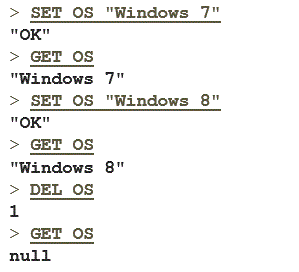Well Rick Krueger( blog | @DataOgre ) and I are back at it again. We have decided to pair up and do a talk about a rather controversial topic in the SQL Server community, NoSQL. Now we are not jumping ship and saying that NoSQL is the way of the future, because that is simply not true. Relational databases have been around since the 70’s and still outperform NoSQL Solutions at most tasks. The idea that we are going to seed is that these NoSQL solutions may have a place in enterprise applications. We are not going to say you should use SQL Server or a NoSQL Solution exclusively, rather we are going to claim Polyglot Persistence. Polyglot Persistence is the idea of using multiple data stores to solve multiple problems, hence Rules of Engagement: NoSQL is SQL Server’s Ally. In this blog post I will be discussing the simplest version of the NoSQL solutions, Key Value Stores.
Key Value Stores
There are many Key Value store implementations, however at the root of each solution, they are simply storing values by a specific key. You can think of this as a two column table, a hash table, or an associative array.
They use a unique indexed key, which allows for fast retrieval of data, and a blob type of field for the value. The key value stores are typically written in some type of programming language, commonly Java. This gives the application developer the freedom to store data how they see fit, in a schema-less data store. Yes I used application developer, freedom, data, and schema-less all in the same sentence. This is a good thing. Typically we, as the DBA’s, are not going to be distracted by how the data is stored in the Key Value Store. Rather, we will be involved with serving up the data that will be pushed into the Key Value store, and helping with any transaction support that is needed.
One of the biggest benefit for most NoSQL solutions, including Key Value Stores, would be horizontal scaling. We all know that horizontal scaling and SQL Server, while it’s possible, does not play well. Typically if you need more from SQL Server you scale vertically, which can be costly.
Another benefit for Key Value stores is a lack of schema, this allows for changing the data structure as needed, thus being a bit more flexible. Whereas with SQL Server altering a table could result in stored procedures, functions, views, etc… needing updates, which take time and a DBA resource.
Key Value stores support “Eventual Consistency”, if a feature in your application doesn’t need to fully support ACID, then may not be a significant draw back. However the features of your application that need ACID transaction support should use a RDBMS, like SQL Server.
Another drawback is querying data from a Key Value store. Simple queries for keys in Key Value stores are a minor task because they are indexed. However, supporting joins or complex queries takes coding by an application developer. Code developed queries lose out on years of SQL Server optimization and caching features.
A Key Value Store Implementation
 Redis
Redis
Redis is an advanced Key Value store, meaning that it can support more complex data types such as Lists, Objects, Hashes, Sets, etc… Redis is a combination of an in-memory and persisted to disk data store. This gives Redis great performance on reads and writes, however it puts a limitation on what can be stored, as memory becomes a constraint. The basic commands for CRUD operations in Redis are rather simple: GET, SET, and DEL. http://try.redis.io/ offers an online utility for learning some of the commands.
Polyglot Persistence, SQL Server and Key Value Stores
Obviously there are pros and cons for Key Value Stores, however creating a hybrid solution, could solve the drawbacks for both SQL Server and Key Value Stores. Every application is different and ultimately you will need to decide what the best fit is, for your application and budget.
With that said an example for a Key Value Store could be session data. Where the session id would be the key and all the session data would be in the value. An in-memory database, such as Redis, could produce quick results to the UI, significantly improving the web applications performance. However when that session ends, all of the updated detailed user information would ultimately need to be persisted, let’s say in a SQL Server Users table.
Or maybe a shopping cart feature, again the shopping cart id would be the key and the contents of the shopping cart would be in the value. What happens when the user checks out? That’s right, we will need to store that transaction, user information, product information, and inventory into a RDBMS such as SQL Server
Conclusion
I am not recommending that you re-write your applications to make room for a NoSQL solution, I am simply suggesting that you as the DBA (keeper of data), should keep an open mind to other possibilities. If there is another solution out there that could assist SQL Server, or is maybe a better fit, exploring the avenue might result in a better data solution. A square object will fit into a round hole if you have a big enough hammer, but could take time and produce a bad product.

Good article! Couchbase bridges the kay between key value store and document database. It’s worth a look for anyone considering adding a NoSQL db as a complement to your RDBMS. Like you said NoSQL isn’t a replacement for RDBMS but more of a partner.